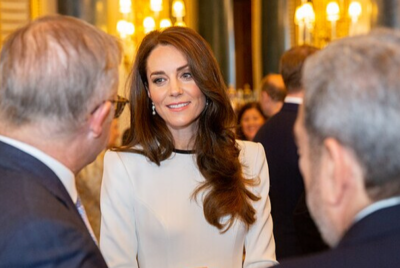How Did a 3D Printer Lead to Terrorism Charges for Man in East London Home?
Prosecutors called the case a deterrent, saying the raid stopped two 3D-printed guns from ever reaching the streets

A routine counter-terrorism probe unravelled into a chilling discovery on 12 July 2025, when officers raided Robert Adamski's modest Leyton flat, catching a 3D printer mid-build of semi-automatic rifle parts that screamed extreme right-wing intent.
This 29-year-old Polish national's hobby turned hazardous, blending online blueprints with hateful ideologies to forge weapons capable of devastation, spotlighting the dark underbelly of domestic extremism in London's diverse boroughs.
As Woolwich Crown Court delivered guilty verdicts on 16 October 2025 for terrorism and firearms offences, Adamski's case warns of how accessible tech amplifies lone-wolf threats in 2025's volatile security landscape.
The Midnight Raid: Printers, Parts, and Perilous Finds
Counter-terrorism officers, acting on intelligence, stormed Adamski's Lee Bridge Road home in Leyton on 12 July 2025, mere hours after his 11 July arrest. There, a humming 3D printer churned out components for the FCG-9 Mk2 semi-automatic rifle, flanked by printed frames, triggers, and a magazine holding 25 cartridges—enough for sustained fire.
Scattered across his desk lay blueprints downloaded days after his June 2025 printer purchase, alongside USB drives brimming with assembly guides. Phone forensics unveiled frantic searches for 3D printed guns and Telegram chats where Adamski, group admin, disseminated far-right manifestos targeting ethnic minorities. Officers seized neo-Nazi paraphernalia, from flags to literature, painting a portrait of radicalisation fuelled by isolation.
Commander Dominic Murphy reflected: 'The intention to make a lethal weapon was clear,' though no imminent plot surfaced. This haul thwarted two potential firearms, averting tragedy in Walthamstow's tight-knit streets. X user @NewDayStarts amplified the shock on 16 October 2025: 'Man who used 3D printer to make gun parts guilty of terrorism and firearms offences,' linking the Sky News verdict.
Such vigilance underscores proactive policing's role in nipping extremism in the bud.
Man who used 3D printer to make gun parts guilty of terrorism and firearms offences
— Ivan Humble (@NewDayStarts) October 16, 2025
The printer was making part of a semi-automatic rifle when counter-terrorism officers searched Robert Adamski's east London home.https://t.co/dgdspPzmxi
Radical Roots: From Clicks to Conspiracies
Adamski's descent began innocuously in June 2025 with a credit card swipe for the 3D printer, soon escalating to saved files on untraceable ghost guns that bypass traditional controls. His device history chronicled dives into dark web forums, where far-right agitators peddle DIY arsenals as empowerment against perceived threats from London's multicultural fabric.
As admin of a Telegram channel, he shared terrorist publications—guides laced with supremacist rhetoric—reaching dozens, experts say, in a bid to inspire copycats. 'Hateful views towards ethnic minorities in London,' Murphy noted, stemmed from echo chambers amplifying isolation into action.
This fusion of tech savvy and ideology mirrors cases like the 2019 Tendai Muswere conviction, Britain's first for 3D-printed firearms, highlighting persistent vulnerabilities. For Adamski, a factory worker by day, these digital forays blurred hobby and hazard, ensnaring him in a web of dissemination that courts deem terror-adjacent.
Safeguarding Streets from Shadow Workshops
After a tense two-week trial at Woolwich Crown Court, jurors convicted Adamski on 16 October 2025 of two firearm possession counts and four terrorism disseminations, facing up to life as sentencing looms on 28 November 2025. Prosecutors hailed the outcome as a deterrent: 'This proactive counter-terrorism investigation has prevented two potential firearms from falling into the hands of a man who held hateful views.'
Murphy added: 'The device still needed a number of other parts as well as technical know-how to make it viable.' Adamski's conviction demonstrates how intelligence-led operations can neutralise threats early, reinforcing the importance of monitoring digital footprints to protect London's diverse communities.
© Copyright IBTimes 2025. All rights reserved.



















